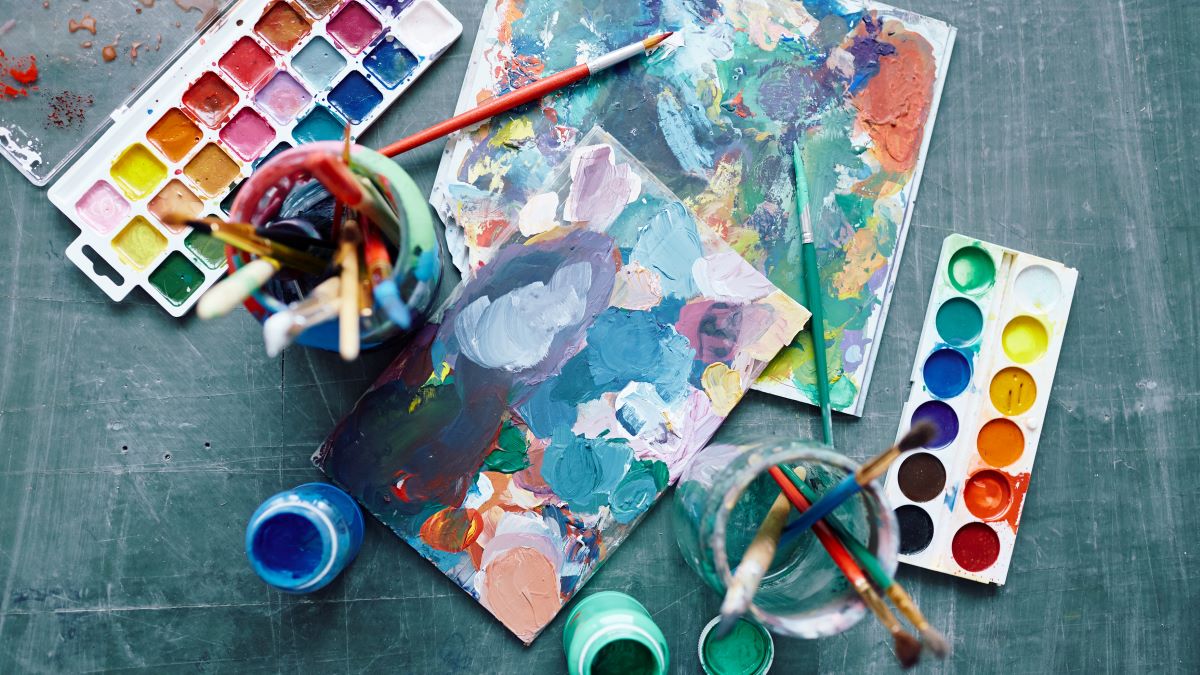Need a mental health boost? Try art.

From sculptures to painting, music and theater, art is firmly a part of the human story. Art provides a way for people to communicate, express themselves and share their creativity. It helps individuals understand others’ stories and often moves them emotionally. This powerful force not only engages the senses, but can provide both physical and mental health benefits.
The effects of art and creativity on physical well-being are widely documented. The World Health Organization notes that the arts can support healthy behaviors and even prevent some medical issues, stating, “They can also reduce stress, which help[s] to prevent or slow the progression of a range of conditions including cardiovascular diseases and even some cancers.” According to the article The Connection Between Art, Healing, and Public Health: A Review of Current Literature by Heather Stuckey and Jeremy Nobel, music therapy helps cancer patients increase their sense of control, with many patients experiencing a reduction in pain and psychological and physical symptoms. Spending time in creative pursuits may also mean patients get to go home earlier and need fewer medications.
Stuckey and Nobel’s article further discusses the effects of art interventions in patients — those who took part had better vital signs and shorter hospital stays. In one study, patients who participated in guided imagery or had a picture or a landscape on their wall did not need as much pain medication.
In relation to mental health, embracing one’s creativity and connecting with others through art can keep the brain sharp and provide an area to attain emotional balance.
Drawing and painting, reports Harvard Health, have helped people with dementia reconnect with the world, with even healthy older people seeing improvements in memory, reasoning and resilience.
Additionally, expressive writing, an art form where people write down their experiences, can serve as a channel for those involved in traumatic events to process their pain and manage negative emotions. Medical News Today points out, “This type of writing allows people to take negative situations that cannot be changed and integrate them into their life’s story, creating meaning for events that left indelible marks — such as a medical diagnosis, a loved one’s death, or a violent experience.”
Get the creative juices flowing
Exploring art in public may be more challenging than in pre-pandemic times, but many museums and galleries, such as the National Gallery in London, are now offering online tours or virtual exhibits. And there are many options to do something creative at home, whether drawing, writing about an experience, dancing to a favorite song or giving a recipe a new twist.
Penn State Health’s Inclusion Week, running June 13 through 17, offers another opportunity to connect through creativity. During the first day of Inclusion Week, participants in the Kienle Ripple Effect Art Workshop “Arts as an Integral Component of Health” will paint mandalas on rocks to reflect a ripple effect.
- Monday, June 13
- Noon-12:45 p.m.
- Virtual session: Register by Monday, May 23 to have a rock-painting kit mailed to you, while supplies last.
- In-person session at Hampden Medical Center: Register by May 23. Participants will receive a rock-painting kit upon arrival.
To view all of the Penn State Health’s Inclusion Week events, see the diversity events calendar. Sign up for the monthly diversity e-newsletter to keep up with diversity, equity and inclusion updates and activities.
If you're having trouble accessing this content, or would like it in another format, please email Penn State Health Marketing & Communications.
